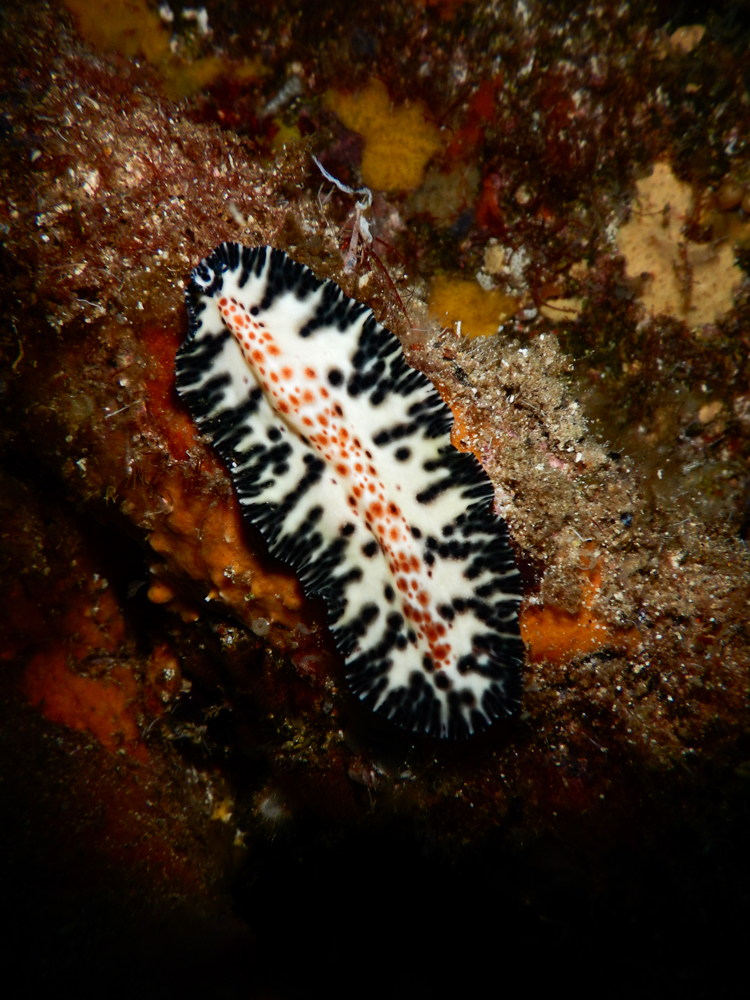Dusky Spotted Flatworm
Eurylepta fuscopunctatus
The dusky spotted flatworm belongs to the phylum Platyhelminthes which contains animals with unsegmented, flat, soft bodies, a definite head with two eye spots, and a large cavity for digesting food. A circulatory system and gills are absent, as respiration is achieved by diffusion, and excretion of metabolic wastes occurs by osmosis, across the thin membranes of the body. The dusky spotted flatworm has a white body with orange spots along the centre and a black trim along the ruffled margins. The mouth doubles as an anus and is situated in the centre of the ventral (underneath) surface. They are free-swimming, active carnivores and scavengers, and feed by enveloping encrusting sponges and ascidians and pushing their stomach out through the mouth.
The dusky spotted flatworm has fine, hair-like cilia on the ventral (underside) surface to enable it to glide over sand and rubble. They are also capable of swimming short distances by undulating their sides in a wave like motion. This species is common in shallow waters from Perth to Geographe Bay.
Occurrence at the Busselton Jetty:
The dusky spotted flatworm is commonly observed from the windows of the underwater observatory, often cryptically hidden amongst the sponges and ascidians, upon which they feed, adorning the jetty piles. This species of flatworm are very colourful and are often mistaken as nudibranchs, however their body shape is much thinner and they do not possess gills.
Image by: A. Brown
